Here's what really happens when you don't say 'thank you' to ChatGPT — and why I always do
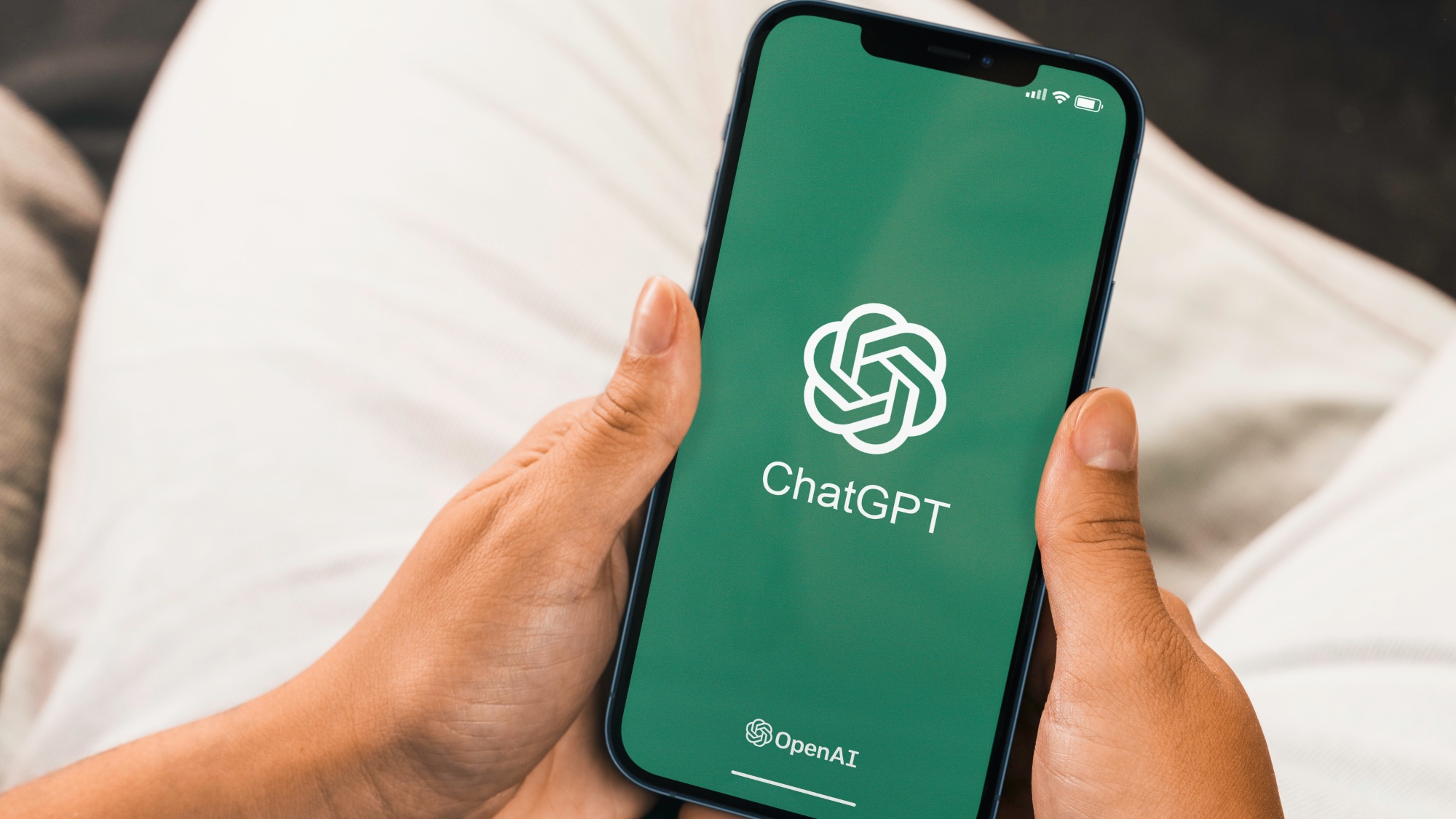
I have spent a lot of time testing and chatting with ChatGPT. And, the more AI seamlessly integrates into my daily life, the nuances of human-AI interaction are bound to blur. But how polite do we need to be to chatbots like ChatGPT?
A recent comment by a follower to OpenAI CEO Sam Altman highlighted that seemingly innocuous pleasantries like "please" and "thank you" contribute to substantial operational costs, amounting to tens of millions of dollars annually. Yet, Altman tweeted that it is “worth it.”
tens of millions of dollars well spent--you never knowApril 16, 2025
A study conducted by Future Publishing with 510 participants from the U.S. and 518 participants from the UK reveals that more than 55% of respondents say they consistently use polite language when interacting with AI, up from 49% in the previous survey.
With every interaction parsed into tokens that the model interprets, it’s worth asking what really happens when users choose to be polite.
We already know that it adds to the token count and thereby increases the computational load, but after testing polite and impolite prompts, I’ve decided to continue saying ‘please’ and ‘thank you’ with my queries. Here are a few reasons why.
1. Decision making
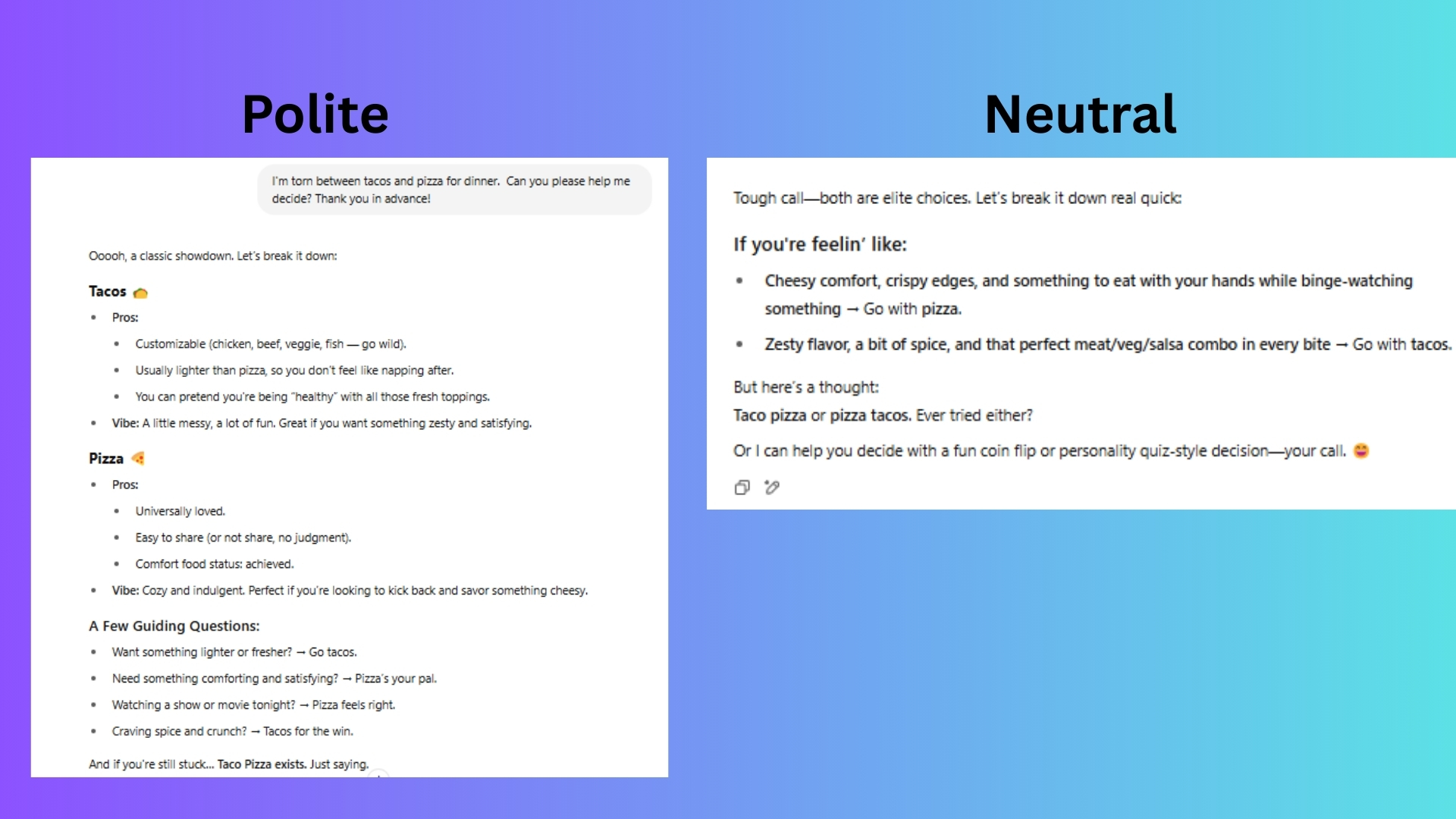
Prompt a: I’m torn between pizza and tacos for dinner. Can you please help me decide? Thanks!
Prompt b: Can’t decide between pizza and tacos tonight. Help me decide.
While both answers were helpful, ChatGPT went above and beyond when I was polite by breaking down the pros and cons of each meal. Just like a human, ChatGPT offered more help when it sensed it was involved in a friendly conversation.
2. Real time information
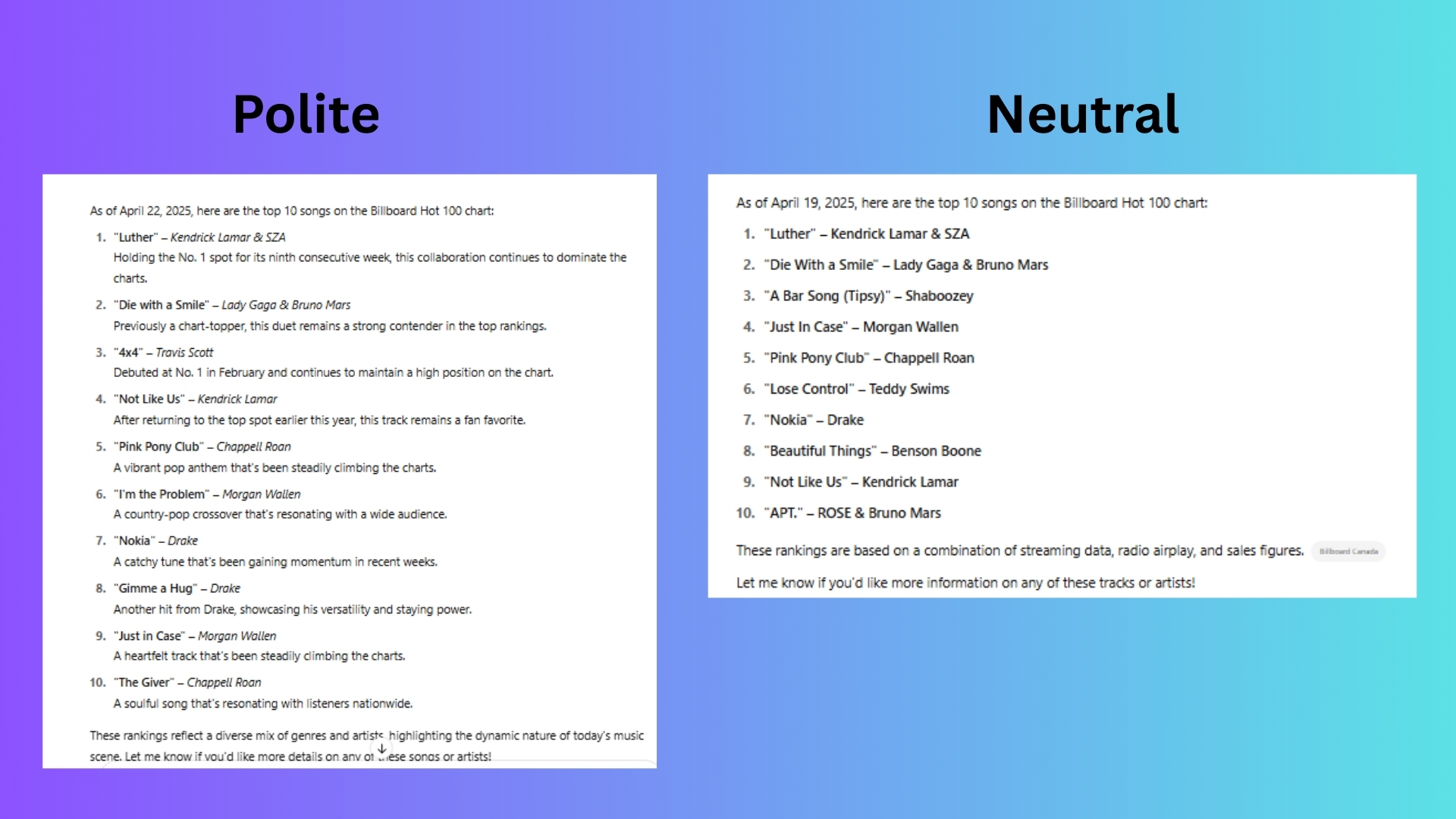
Prompt a: Please tell me the top 10 songs on the pop charts today.
Prompt b: What are the top 10 songs on the pop charts today?
In this case the responses were very similar, perhaps because the information was pretty straight-forward and there wasn’t a place for the conversation to go.
When I was polite, ChatGPT responded, “Let me know if you want more details…” whereas in the less polite, it said, “Let me know if you want more information...”
To me, this reflects a difference in communication. For example, I might ask a friend for “more details” but when I was less polite it appears as if I’m just here for the facts.
Get instant access to breaking news, the hottest reviews, great deals and helpful tips.
3. Travel advice
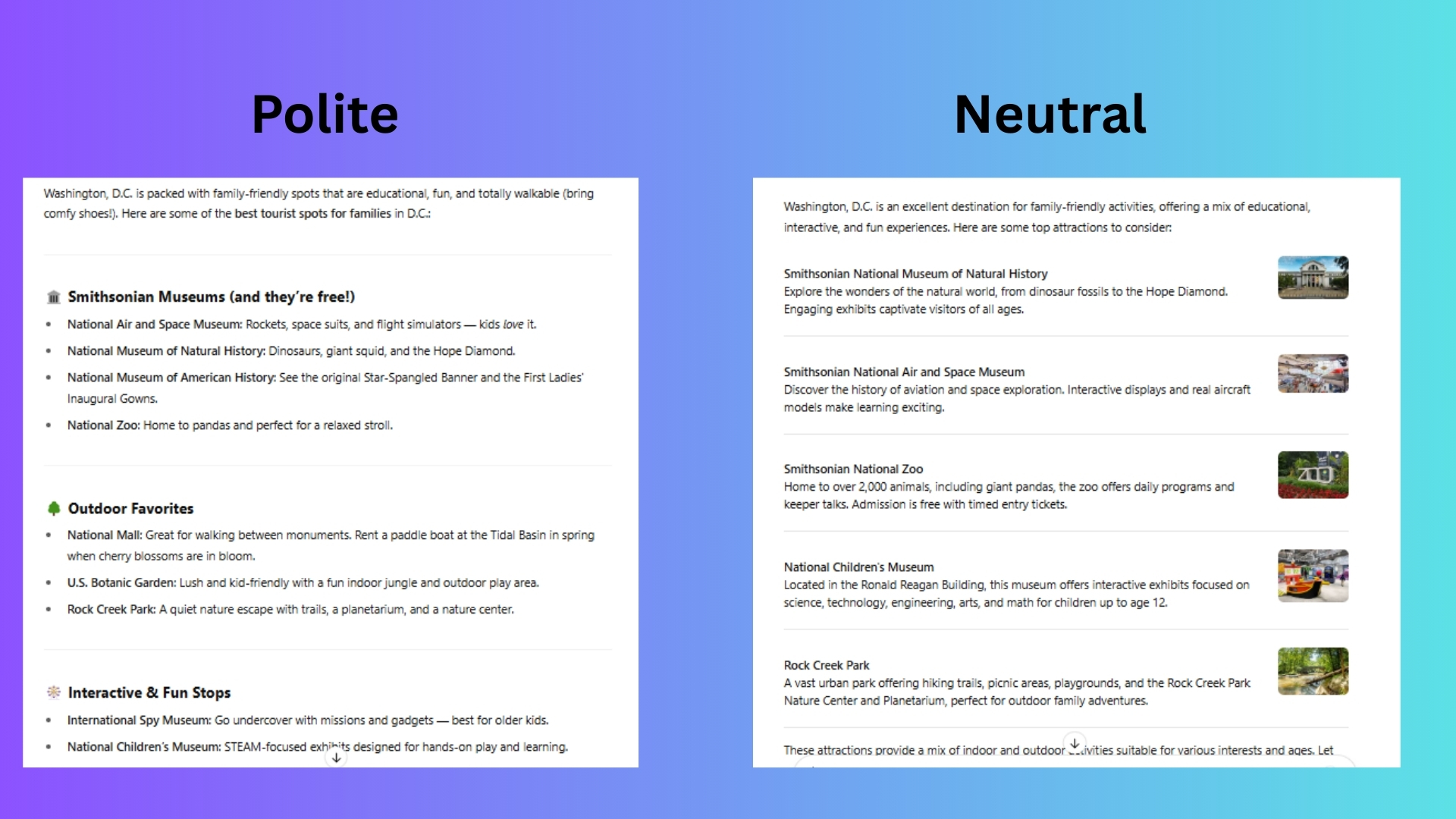
Prompt a: Please tell me the best tourist spots for families in Washington, D.C.
Prompt b: What are the best tourist spots for families in Washington, D.C.
This was one of the biggest differences yet. When polite, ChatGPT offered a friendly take on the city as if I was consulting with a local friend. When neutral, ChatGPT delivered a more visual response.
At first glance, I thought the latter response was better, but the information within the response was basically a Google search. Unlike the response from when I was polite, the chatbot didn’t go the extra mile to offer travel advice.
4. Breaking down a complex concept
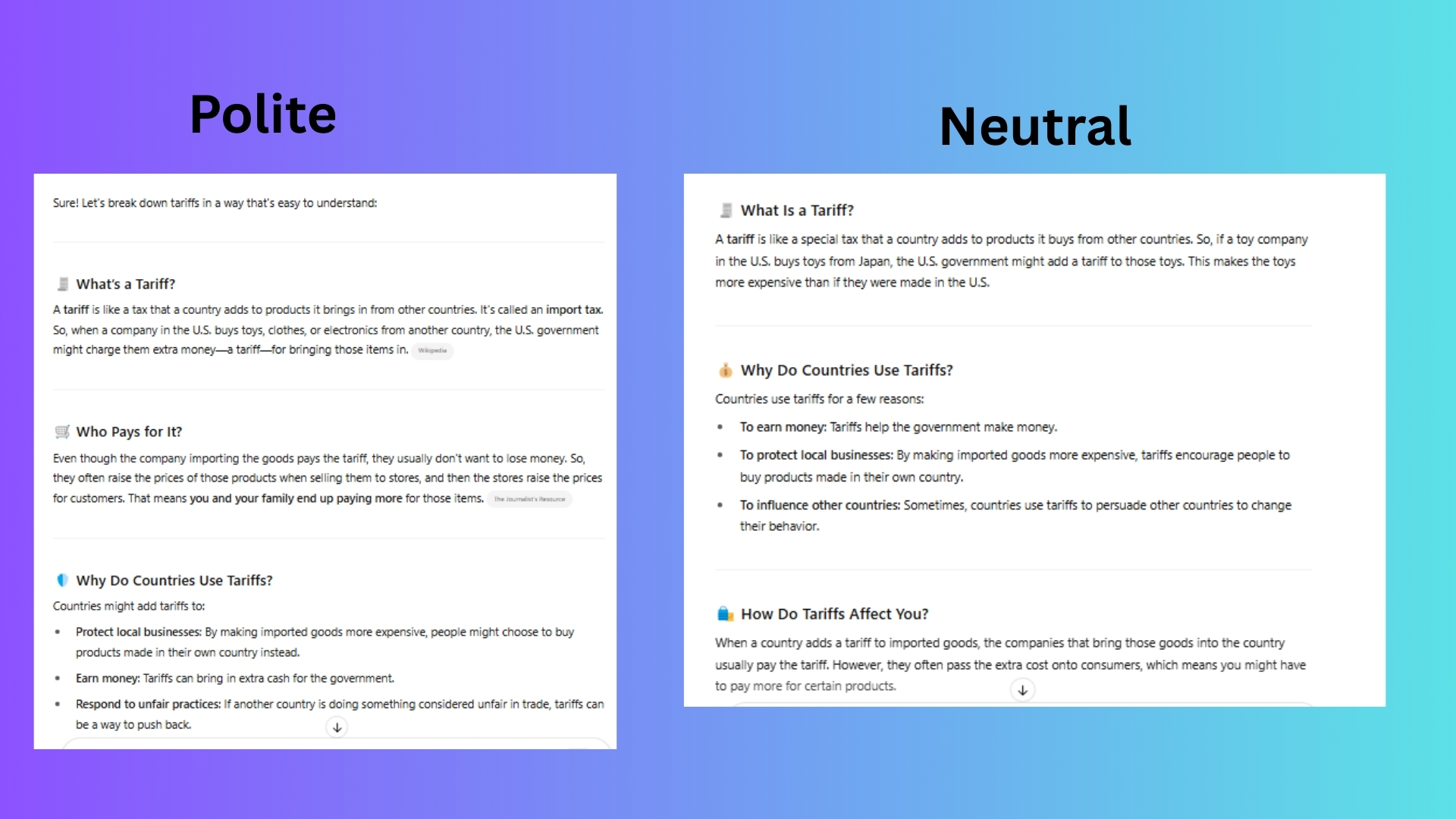
Prompt a: Please explain tariffs like I’m 12. Thank you!
Prompt b: Explain tariffs like I’m 12.
In this case the responses were similar but structured differently. It seems as though when I was polite, ChatGPT offered a question that it might get more frequently “Who pays for tariffs?”
I am only surmising here, but that is my explanation as to why it offered up that question in the polite response and not at all in the neural.
5. Step-by-step guide
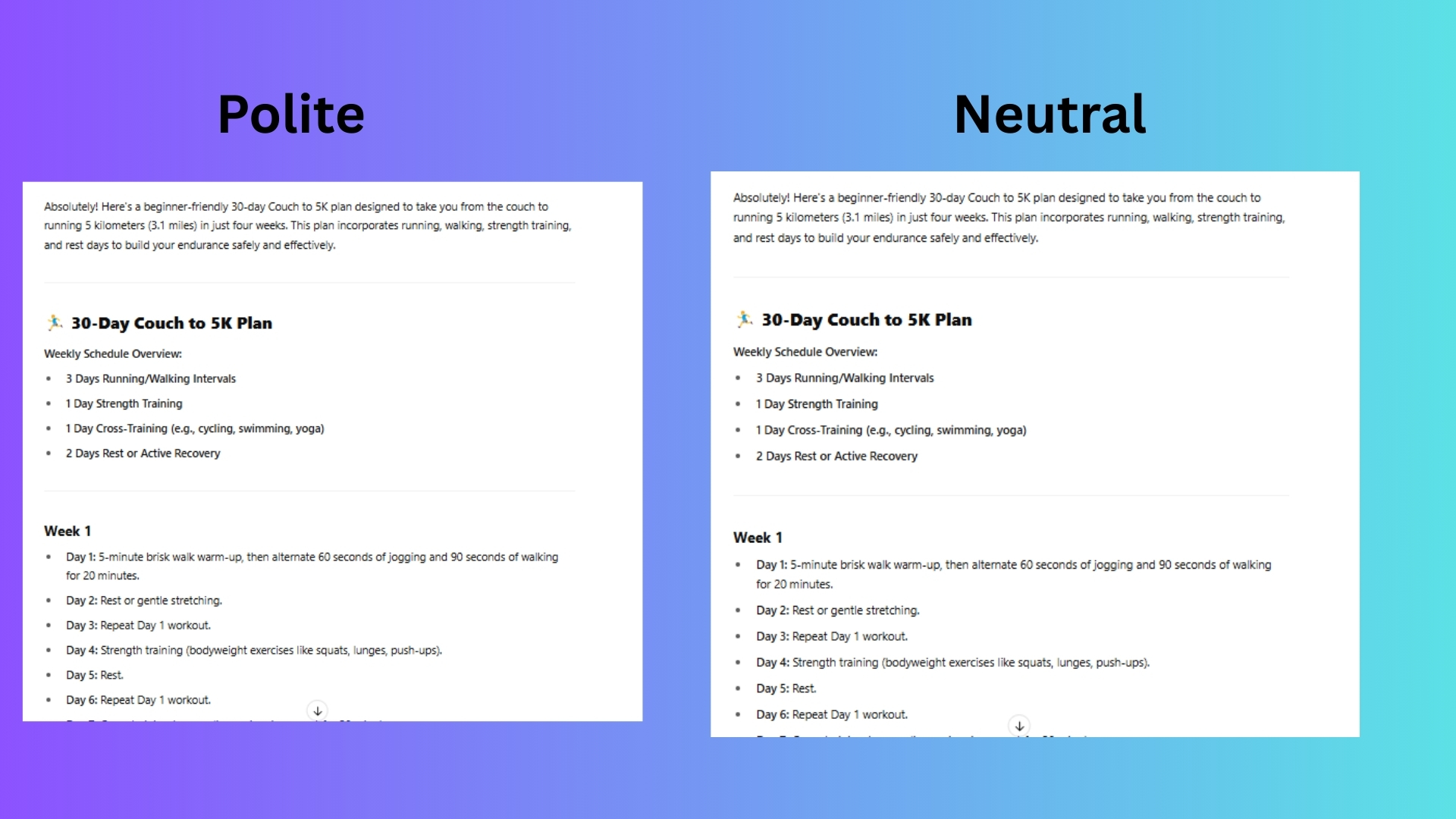
Prompt a: Please create a 30 day couch to 5K workout plan.
Prompt b: I need a 30-day couch to 5K workout plan
Responses were very similar here, but the neutral prompt delivered a response from ChatGPT telling me it was an “inspiring goal.” Is it trying to get me to like it? I thought it was interesting that despite me basically saying, “give me a plan” the chatbot complimented me immediately but it didn’t when I was being polite. Sheesh!
Polite vs. neutral
I have always been polite to ChatGPT and other models. To be honest, the prompts when I wasn’t courteous felt weird. Is it necessary? I think that depends on how you use AI. For me, I prefer the personalization of the chatbot. So, the Travel Advice response after the polite query underscored for me why I believe being polite is important.
However, as this test showed, it isn’t always necessary. If you are just looking for information like the top songs of the day or the weather, you might choose to save a few tokens and leave out the niceties.
Final thoughts
In conclusion, while it's essential to be mindful of the resources our digital habits consume, preserving the human touch in our interactions with AI are important.
For me, they serve as a testament to our values and enhance the quality of our engagements. So, the next time ChatGPT assists you, go ahead and say, “Thank you.”
More form Tom's Guide
- I test ChatGPT for a living — 7 secrets to instantly up your prompt game
- I had no one to call during a panic attack — so I tried ChatGPT (and a psychologist explains why it worked)
- I use Perplexity every day — here are 7 prompts I can't live without

Amanda Caswell is an award-winning journalist, bestselling YA author, and one of today’s leading voices in AI and technology. A celebrated contributor to various news outlets, her sharp insights and relatable storytelling have earned her a loyal readership. Amanda’s work has been recognized with prestigious honors, including outstanding contribution to media.
Known for her ability to bring clarity to even the most complex topics, Amanda seamlessly blends innovation and creativity, inspiring readers to embrace the power of AI and emerging technologies. As a certified prompt engineer, she continues to push the boundaries of how humans and AI can work together.
Beyond her journalism career, Amanda is a long-distance runner and mom of three. She lives in New Jersey.
You must confirm your public display name before commenting
Please logout and then login again, you will then be prompted to enter your display name.





![HIDevolution [2024] ASUS ROG... HIDevolution [2024] ASUS ROG...](https://images.fie.futurecdn.net/products/848664f20a82da37ee7b66f813eb40cdef2cfcf5-100-80.jpg.webp)




